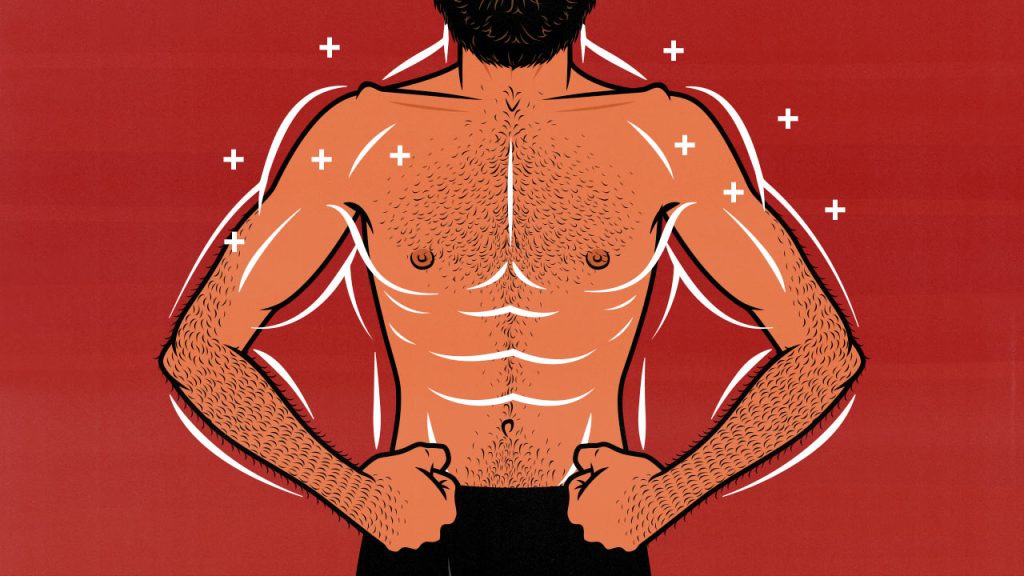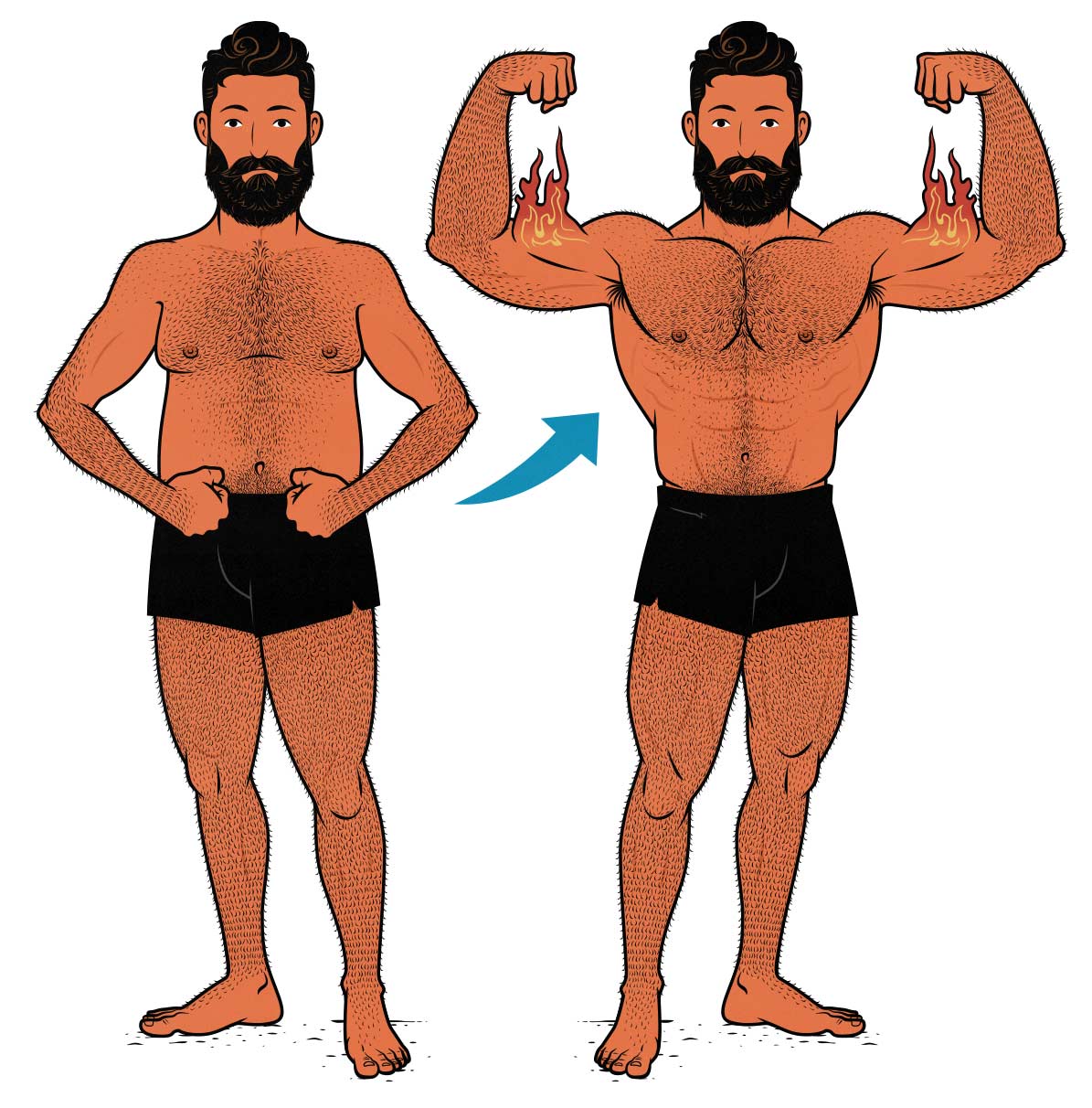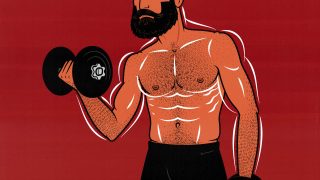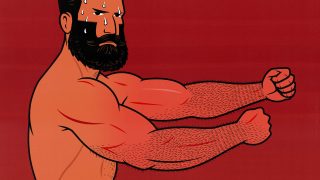
How Long Should Your Workouts Be to Build Muscle?
A good rule of thumb is to start with three full-body workouts per week, each lasting 45–90 minutes. When those workouts start to feel too long or tiring, add a fourth day.
If you’re following a good program, 45 minutes is enough to get you around 80% of your muscle growth. If you want to get closer to 100%, you can add in extra sets and exercises, training for the full 90 minutes.

A Word of Caution for Beginners
If you’re a beginner, your muscles will be incredibly sensitive during your first 1–3 weeks of lifting weights. That’s a double-edged sword: you can maximize your rate of muscle growth with just a couple of sets per exercise, which is great, but if you accidentally do too much, you’ll be crippled with soreness for a good week.
If you’re doing 4–7 exercises per workout, 2 sets per exercise, and resting 2–3 minutes between sets, you might finish your workout in 30–40 minutes. That’s perfectly fine. Go home and eat. You’ve earned a hearty post-workout meal.
Every week, your muscles will grow tougher, allowing you to add more sets. As you work your way up to doing 3–5 sets per exercise, your workouts will start taking 45–90 minutes.
The 45–90 Minute Rule of Thumb
45–90 minutes is great for most people, but it’s still just a rule of thumb, and the length of your workout doesn’t matter that much. It’s far more important to choose good exercises, push close to failure, do enough sets, and try to outlift yourself every workout.
You’ll build a similar amount of muscle if you train for half an hour every day, an hour every second day, or ninety minutes every third day. You could even spread your workout throughout the day, doing an absurd number of miniature workouts.
The important thing is to train with vigour and stop when you run out of it. By the time you’ve been training hard for 90 minutes, you’ll be tired, and you won’t be able to push yourself hard enough to provoke much extra muscle growth. Best to call it a day.
How to Make Your Workouts Shorter
The most obvious way to shorten your workouts is to shorten your rest times. After you’ve rested for about 3 minutes on bigger exercises or 2 minutes on smaller exercises, resting any longer is wasting time. That’s especially true if you’re more interested in muscle and fitness than increasing your 1-rep max.

However, if you rest for less than 2–3 minutes, you’ll stimulate less muscle growth per set, so you’ll need to make up for that by doing extra sets (study). Your workout will wind up taking about the same amount of time. That isn’t good or bad—both short and long rest times have their place in a good hypertrophy training routine—but neither approach will make your workouts much shorter.
The next thing you can do is trim out the fluff. If you’ve already done a barbell bench press, you probably don’t need a dumbbell bench press, and if you’ve already done squats, you probably don’t need leg presses. The exercises are too similar. Better to do an extra set of the exercise variation you prefer.
The final (and best) way to shorten your workouts is to use supersets and giant sets.
- Supersets are when you alternate between two exercises that train different muscle groups. For example, deadlifts and push-ups. You’d do a set of deadlifts, rest for 1–2 minutes, do a set of push-ups, rest, and go back to deadlifts. This cuts the length of your workout in half without any loss of muscle growth.
- Giant sets are when you alternate between three different smaller exercises. For example, biceps curls, triceps extensions, and lateral raises. You’d do your curls, rest for 30–60 seconds, do your extensions, rest, and then do your lateral raises.
How to Make Your Workouts Longer
If you want to take a maximalist approach to building muscle, there are a few good ways to make your workouts longer. Here are some of them:
- Spend more time warming up, doing mobility drills, and doing warm-up sets. That way, you get more practice without adding much extra fatigue.
- Choose exercises with a higher “stimulus-to-fatigue ratio.” That way, you can do more exercises without accumulating as much overall fatigue.
- Start with the big compound lifts. That way, you’re doing the harder, more important, and more technically demanding exercises before you’re fatigued.
- Do an easy strength set before your hypertrophy sets. Let’s say you’re mainly interested in building a big chest, but you also like the idea of having a big bench press. You could warm up to an easy 3-rep set with 10%+ more weight than you’ll be using in your hypertrophy sets. That will increase your 1-rep max while making your hypertrophy sets feel lighter. (I got this trick from Greg Nuckols.)
- Add as many isolation exercises as you want. Once you’ve done the big exercises, you’re free to fill your workout with simpler exercises that stimulate the muscles you’re most eager to grow. You can do biceps curls, hamstring curls, neck curls, and so on.
Also, you could train more often instead of making your workouts longer. You could work up to doing four, five, or six workouts per week. I train three days per week, but I’ve experimented with as many as five days per week.
Alright, that’s it for now. Feel free to ask questions below. I’ll answer all the comments.
If you want a full muscle-building program, check out our Bony to Beastly Program (for men) or Bony to Bombshell Program (for women). They’re full muscle-building courses. We’ll teach you every exercise, give you a full workout routine, show you how to eat a nutritious muscle-building diet, and arm you with a book full of muscle-building recipes.

We’ll also give you personal support as you go through the program, helping you track your progress and make adjustments. We have an unconditional refund policy.





